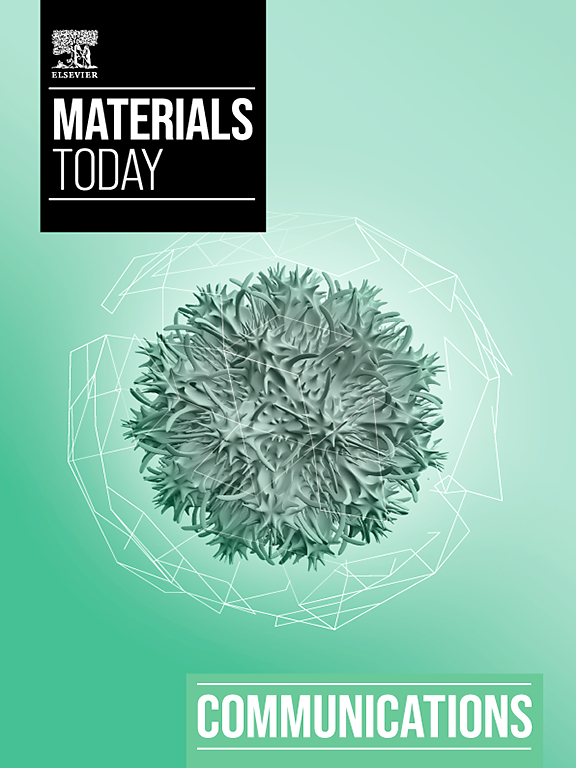使用 Fe3O4/锯末/MWCNT 高效吸附去除甲基绿:解释西格玛行为
IF 4.5
3区 材料科学
Q2 MATERIALS SCIENCE, MULTIDISCIPLINARY
引用次数: 0
摘要
水管理中的 4R 概念(减量、再用、循环和再利用)要求利用可持续天然材料的创新吸附技术。本研究探讨了利用天然锯屑嵌入磁性氧化铁来处理废水。新合成的氧化铁/锯屑吸附剂的性能也与原生氧化铁和氧化铁/MWCNT 进行了比较。由于甲基绿(MG)的广泛使用和潜在毒性,因此将其作为模型污染物。在环境条件下,新型吸附剂的去除率超过 97%。研究调查了 pH 值对吸附的影响,发现随着 pH 值的升高,去除效率会发生显著变化,最佳 pH 值约为 7。对 pH 值依赖性的解释基于氧化铁吸附剂的零电荷点和染料的结构。通过温度研究确定了吸附的热力学参数(Δ°、Δ° 和 Δ°)。研究发现,吸附平衡是内热式的,因此需要较高的温度。由于研究中的吸附数据呈现出类似 S 形的曲线,因此采用了西格玛模型来描述吸附等温线。这为了解异质氧化铁/锯末表面的竞争吸附机制提供了新的视角。动力学研究表明,吸附速度快、效率高,并出现了假秒阶反应。反应的半衰期低至 4.8 分钟。研究结果表明,这是一种快速、高效和可持续的去除废水中有机污染物的方法。本文章由计算机程序翻译,如有差异,请以英文原文为准。
Efficient adsorptive removal of methyl green using Fe3O4/sawdust/MWCNT: Explaining sigmoidal behavior
The 4R concept (reduce, reuse, recycle and repurpose) in water management necessitates innovative adsorption techniques that utilize sustainable and natural materials. This study investigates the use of natural sawdust embedded in magnetic iron oxide to treat wastewater. The performance of the newly synthesized FeO/sawdust adsorbent was also compared to the native FeO and FeO/MWCNT. Methyl Green (MG) was used as a model pollutant due to its wide use and potential toxicity. The new adsorbents demonstrated a high removal efficiency that exceeds 97 % under ambient conditions. The study investigates the effect of pH on adsorption, revealing a significant shift in removal efficiency as pH increases, with an optimal pH of around 7. The pH dependence is explained based on the point-of-zero-charge of the FeO adsorbent and the structure of the dye. The thermodynamic parameters (Δ°, Δ°, and Δ°) of adsorption were determined through a temperature study. The adsorption equilibrium was found to be endothermic, therefore preferring elevated temperatures. Because the adsorption data of the study exhibited S-shaped-like curves, sigmoidal models were used to describe the adsorption isotherms. This provided new insights into the competitive adsorption mechanisms acting on the heterogeneous FeO/sawdust surfaces. The kinetics study indicates rapid and efficient adsorption with pseudo-second-order reaction. The half-life of the reaction was as low as 4.8 min. The findings suggest a rapid, highly efficient and sustainable method to remove organic pollutants from wastewater.
求助全文
通过发布文献求助,成功后即可免费获取论文全文。
去求助
来源期刊

Materials Today Communications
Materials Science-General Materials Science
CiteScore
5.20
自引率
5.30%
发文量
1783
审稿时长
51 days
期刊介绍:
Materials Today Communications is a primary research journal covering all areas of materials science. The journal offers the materials community an innovative, efficient and flexible route for the publication of original research which has not found the right home on first submission.
 求助内容:
求助内容: 应助结果提醒方式:
应助结果提醒方式:


